This leaflet answers common questions about how to manage your fluid as a kidney patient. If you would like further information, or have any worries, please do not hesitate to ask your nurse or doctor.

Why do I need to limit my fluid?
One of the main functions of the kidneys is to control the amount of fluid in your body.
When your kidneys do not work properly, they may produce less urine. Dialysis removes some of this fluid, but you also need to reduce the amount you drink.
If you drink more than your daily fluid allowance on a regular basis it will build up in your body and can lead to fluid overload.
How can fluid overload cause problems?
Too much fluid can cause:
- Oedema (swelling) – you may first notice this in your ankles and legs, which may cause your legs to feel heavy and uncomfortable
- A strain on your heart. This will eventually weaken your heart muscles and can lead to heart failure
- High blood pressure
- Breathlessness (especially when you lie flat) due to fluid on the lungs
- Nausea, headaches, and muscle cramps
- Feeling ‘washed out’ after dialysis
We understand that it may not be an easy task to reduce your fluid intake. We are here to help you with making this change.
How much can I drink?
This differs from one person to another depending on the amount of urine you pass daily.
Your fluid allowance may also change over time. In general, the more urine you produce, the more you can drink.
Your daily fluid allowance is calculated as 500mls, plus the volume of urine you pass in 24 hours. For example, if you do not pass any urine then your allowance is 500mls per day. If you pass 500mls urine in 24hrs then your allowance is 1000mls per day.
Calculate your daily fluid allowance
I am entitled to ____ mls/ day
If you are unsure how much fluid you are allowed, ask your doctor, nurse, or dietitian on the haemodialysis unit by emailing renal dietitians: rf.
Your body is made up of 60-70 per cent fluid. Fluid weight and body weight (muscles, bones, and body fat) are different. Changes in weight due to fluid occur quickly over a few days, while body weight changes happen over weeks or months.
You may hear the term ‘dry weight’; this is your weight without the excess fluid that builds up between dialysis sessions. The weight you gain between dialysis sessions is due to fluid. For most patients, a fluid gain of between 1.5-2.5kg in between dialysis sessions is ideal.
What should I count as fluid?
Fluid includes everything you drink and any food that is liquid at room temperature including:
- Water, squash, fruit juice, fizzy drinks
- tea, coffee
- milk, milkshakes
- alcohol
- ice cubes
- soup, thin dhals (dal)
- gravy from casseroles, stews, curries, sauces
- custard, ice cream, yoghurt, lassi, cream and jelly.
Most foods contain some fluid (e.g., porridge, rice, pasta, fruit, and vegetables); these are not included within your fluid allowance.
Useful examples of fluid intake
- Average bottle: 500mls
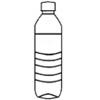
- Small bottle: 330mls
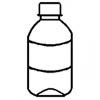
- Plastic or paper cup (dialysis): 175mls / 200mls
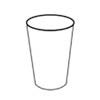
- Small cup of tea: 150-200mls
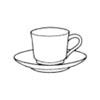
- A regular mug: 300mls
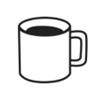
- Standard can: 330mls
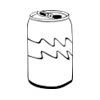
- Milk on cereal: 150mls
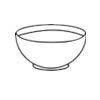
- Yoghurt pot: 125mls
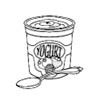
- A glass of wine: Small 125mls / Large 250mls
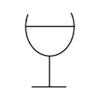
- Pint: 586mls, half pint = 284mls
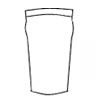
Household measures
- One ladle: 150ml
- One tablespoon: 15ml
- One teaspoon: 5ml
- One ice cube = 15-30ml
Practical tips for managing your fluid allowance
You may find it hard to keep to your fluid allowance at first. Follow these tips to try and make it manageable.
Spread your fluid allowance throughout the day.
Try using half-full cups or small cups, e.g., espresso cups. This will enable you to have smaller drinks more frequently.
Try drinking cold drinks
These are often more refreshing than hot ones.
Moisten and refresh your mouth
Suck on ice cubes or fruit (from your allowance), or chew sugar-free gum, use a mouthwash and brush your teeth regularly.
Avoid using up some of your fluid allowance
Have toast instead of cereal for breakfast
Stimulate saliva production
Suck or chew sharp or fizzy sweets, like:
- Refreshers
- acid drops
- fizzy cola bottles
What else affects my fluid control?
Salt
- Salt makes you feel thirsty and can worsen the symptoms of fluid overload. Limit your salt intake to less than 6g a day.
- Salt mainly comes from processed foods, salt or stock cubes added to cooking / at the table.
Food labels for salt
- Low: less than 0.3g salt per 100g (0.1g sodium)
- Medium: between 0.3-1.5g salt per 100g (0.1-0.6g sodium)
- High: more than 1.5g salt per 100g (0.6g sodium)
Blood glucose
- If you have diabetes, ensuring you have good blood glucose (sugar) control, will help you to control your fluid intake.
- High blood glucose levels will increase your thirst.
- If you would like more advice: speak with your dietitian, diabetes nurse or GP.
Peritoneal dialysis (PD)
Drinking too much fluid will require the use of stronger PD bags to remove this extra fluid; these contain more glucose (sugar). Through this the effectiveness of the peritoneum is reduced and could impact how long you are able to be on PD. The extra calories from the glucose can lead to unwanted weight gain.
Measuring your fluid intake
To help you measure your fluid intake, copy the chart below and use your cups at home to fill it in:
| Type of cup | ml |
|---|---|
| Teacup | |
| Mug | |
| Beaker | |
| Glass | |
| Tumbler | |
| Wine glass | |
| Ice cube | |
| Coffee cup | |
| Hospital/ dialysis polystyrene cup |
Useful information
You may find these websites useful:
 Translate
Translate